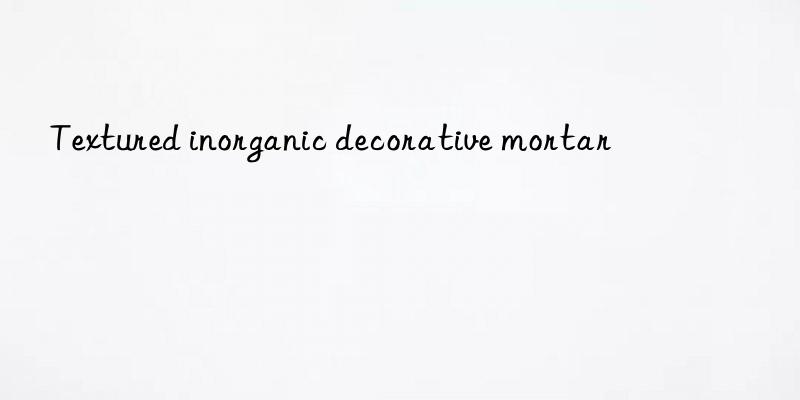
Inorganic decorative grouts, stuccoes, and putties are part of a coating system, usually applied over a thick base coat (plaster) or over other types of uniform and smooth surfaces (concrete, mortar board, etc.). For exterior walls, lime-cement mortar is mainly used as a decorative material. Decorative mortars must provide an aesthetically pleasing surface finish to building facades and must fulfill physical functions such as long-lasting protection of covered walls and base coats from moisture and weather effects.
In order to meet the required physical properties in the long term, inorganic decorative coating materials must have good substrate adhesion, low water absorption and good waterproof effect (low water absorption coefficient), good drying characteristics (good water vapor permeability) and low crack susceptibility; the elastic modulus of the inorganic coating should be lower than the elastic modulus of its underlying material.
Inorganic textured decorative mortars are good examples of meeting these requirements and are produced in the same way as factory-made dry mix mortars. Today, the term "decorative mortar" refers to a white or light-colored building facade coating material that can be used as a final decoration without the need for additional paint treatments. The components of inorganic decorative mortar include slaked lime and cement as inorganic binders, aggregates (fillers), pigments and additives, such as cellulose ethers and starch ethers, to improve water retention and workability. If necessary, other additives can be added, such as air-entraining agents, waterproofing agents, retarders and fibers. The proportion of cement and hydrated lime can vary according to different requirements; the higher the cement content, the better the compressive strength, toughness and waterproofness, but the risk of cracks increases due to the brittleness and shrinkage of the mortar. The higher the hydrated lime content, the better the workability, but the lower the compressive strength. Carbonate fillers such as marble or limestone can be used in addition, or can completely replace quartz sand. The technical specifications of decorative mortars can be significantly improved by adding organic polymer binders such as redispersible powders. The different structures of hardened mortars result from the different particle size distributions of the fillers (large particles that form the structure) used in the mix and the application methods (by spraying, brushing, troweling and rolling). Inorganic decorative grouts are applied by hand, but are increasingly being applied by machine.
Standard DIN 18550 specifies the technical requirements and applications of inorganic-based plasters and decorative mortar coating systems.
</p

 微信扫一扫打赏
微信扫一扫打赏

